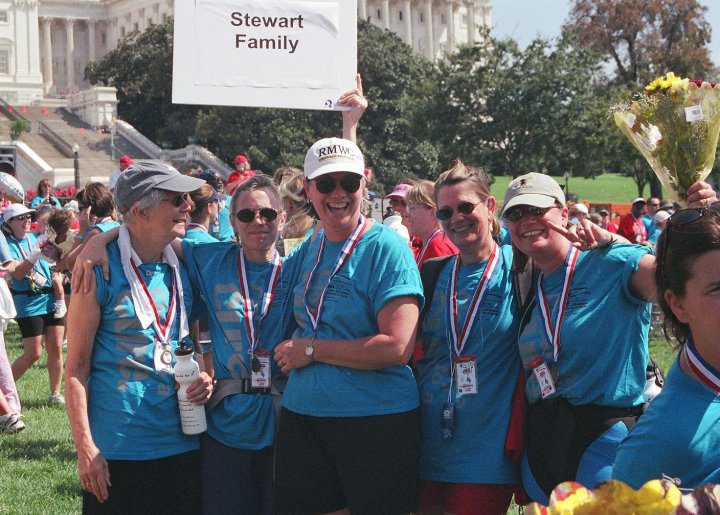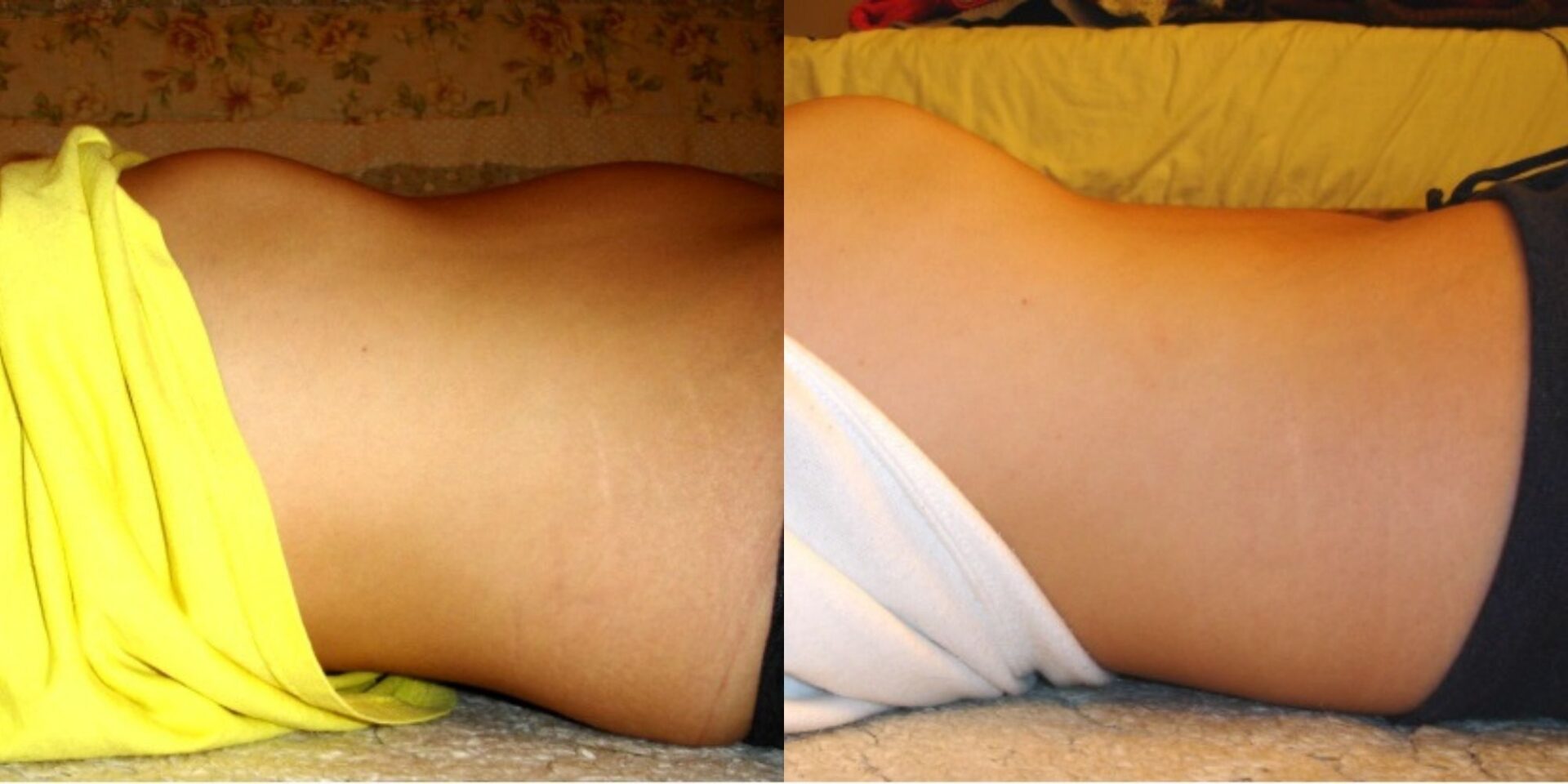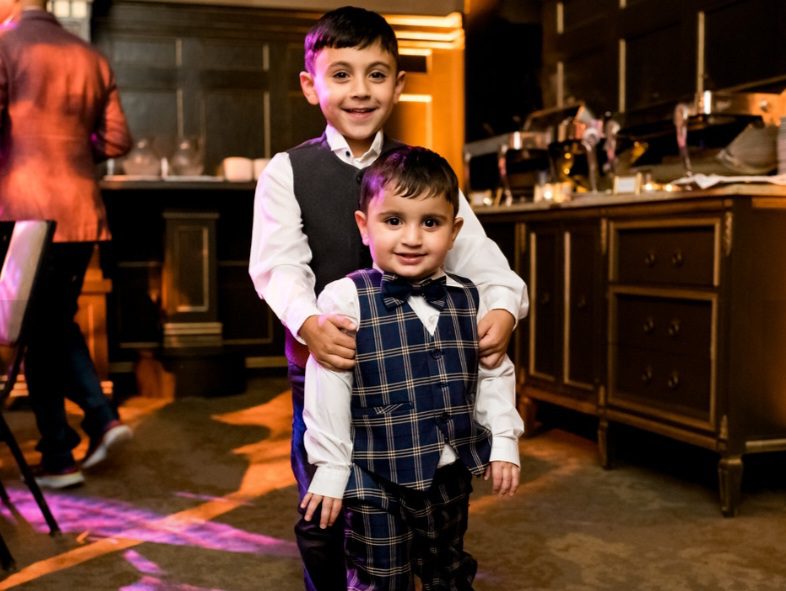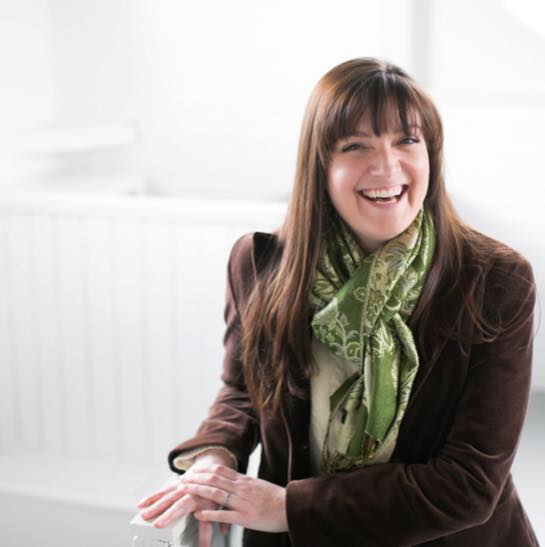My whole life is an open book, and I’ve never been shy when it comes to sharing stories about what I’ve been through. Not because I crave the attention, or because I think my stories are worth hearing any more than anyone else’s. But because I think it’s important to de-stigmatize certain topics that seem to be taboo in our culture.
In my adult life, I have become a bit of an ambassador for listening to your body. I speak openly about some things that my body has endured to hopefully enable others to recognize what’s going on with their own bodies.
I’ve recently become involved with a fundraising campaign with the Leukemia & Lymphoma Society (LLS.) Fortunately, I haven’t had a personal brush with leukemia or blood cancers, but I fell in love with the LLS’s mission pillars. My favorite one is their advocacy mission. They do an amazing job of ensuring patients can get the testing they need and have all the resources for success in their fight against blood cancers. It makes me think of my own health scares and how fortunate I have been to have the ability to advocate for myself and get the tests that keep me healthy.
I was old enough to be able to remember it for the rest of my life, but not old enough to really understand what was going on, when my mother had a full hysterectomy. They took everything. Her ovaries, uterus, fallopian tubes, everything down to her cervix. She was just thirty-something. It launched her into early menopause, but it kept her healthy. She had battled a series of benign cysts and lesions for several years. Although they weren’t malignant, they were uncomfortable, painful even. I recall my mother explaining, at the time, that she was getting a hysterectomy. She used that word. It was a big word for a kid younger than age ten to hear. But it was never a secret, and my parents never dumbed it down for my sister or me. We were told, very clearly, that they were going to open her up at the bottom of her belly and remove her uterus. And then she would be better. I also remember a trip to Key Biscayne, shortly after the surgery. My grandparents had a winter home there, so my sister and I spent some time with our Mom Mom & Pop Pop while our mother recovered, poolside. I didn’t know, at the time, that she was dealing with a very painful and intense recovery. To me, we were on vacation. But to my mother, her kids were being taken care of by her in-laws so that she could recover with ease.
Not long after the hysterectomy, I noticed a scar on my eldest aunt’s lower abdomen while we were getting ready to go swimming at the community pool. I was young enough, still, that I was uninhibited about asking a personal question like, “What’s that scar from?” She explained that it was from a surgery that was very similar to the one my mom had. I realized, then, that I might also have a scar like that someday.
Fast forward several years. When I was 14, my next eldest aunt recovered from her own hysterectomy at my home while my mother cared for her. She didn’t have a large incision like my mother and her oldest sister did. She had her uterus removed laparoscopically. Her incisions were much smaller than the ones from which my mother and eldest aunt recovered many years prior. But her recovery was equally as painful and intense.
A few more years later, my youngest aunt was blessed with a baby boy. Upon review of one of her ultrasounds, a large ovarian cyst was found. As a result, my cousin was born by Caesarian Section, so the doctors could simultaneously remove her enlarged ovary. Her badge of honor spans from hip to hip.
My mother is the third of four daughters in her family. Four women, four abdominal incisions. It was very clear that my cousins and I would need to pay close attention to our bodies for the rest of our lives.

In my early 20’s, my body began to change. It became increasingly difficult to maintain the girlish figure that had been so effortless for me in the past. I was getting the dreaded pooch. On multiple occasions, I was congratulated, or asked if I was pregnant. Devastating for a 23-year-old in relatively good shape. I can recall one particular incident where the cashier at my workplace cafeteria asked if I was pregnant. I replied that I was not, and she looked truly confused. I sat at the lunch table with my coworkers and couldn’t bear to eat one bite. After all, I thought I was getting fat. I looked like I was wrapping up my first trimester, but I wasn’t pregnant. I told my friends what had happened, and no one really knew what to say. They could see it too. One of my colleagues came to the rescue with the perfect response. “Rachel, she only asked you if you’re pregnant because you’re glowing.” Score one point for that guy.
My solution was to work out. I took every core/ab workout class the gym had to offer. I was in the best shape of my life. But that darn belly wouldn’t go away. Maybe I needed to try a different workout. A Pilates class at the gym was my next step, and it was the cause of a breakthrough for me. One exercise required us to lay flat on our bellies and raise our arms and legs off the floor. It’s an incredible core workout but puts all your body weight on your abdomen. I couldn’t help but inquire, aloud, “Does this hurt anyone else’s uterus?” Everyone looked at me as though I was insane, inappropriate, or disruptive. In truth, I was scared.
Soon after that, I had a routine exam with my gynecologist. She pressed on my abdomen in an attempt to locate my ovaries and check them for normalcy. She couldn’t find my ovaries. It’s common for abdominal muscles to tense up enough that it is difficult or impossible to feel organs behind them when you’re pressing on those muscles. My doctor noticed my firm abdomen and asked me if I had been working out a lot lately. Why, yes, I had! I tried to relax my muscles; I really did. But I was just in such fabulous shape that there was no way to make my abdomen feel soft! Or so I thought. But there was something else to cause some concern. I felt an intense pressure when she pressed on me. It was the same pressure and pain I had felt during that Pilates session. The doctor didn’t feel comfortable with giving up on trying to find my ovaries, so she prescribed an ultrasound. A few days later, an ultrasound revealed that “there was something there.” That’s what the tech was able to tell me. That’s it. There was just something there. I had to wait for a call later that day from my doctor, who analyzed the images right away.
It was a Fibroid Teratoma measuring 17cm in diameter. A benign cyst the size of a cantaloupe. It was not my strong muscles my doctor had felt at all. It was the cyst. Although it was not cancerous, it was large and complicated enough that my doctor immediately referred me to a gynecological oncologist. Dr. McCollum became the man who would take care of me. He took one look at me and determined right away that the entire left ovary needed to come out. But that came with reassuring news. I would be “skinny again,” he told me.
A few weeks later, I had the surgery. It was essentially a c-section, a six-inch cut. Out came what was practically a baby. Teratomas are basically cells that go haywire and reproduce to create parts of a body, but in no recognizable form. My cyst was a blob of hair, nerve tissue, teeth matter, and muscle tissue. There was no semblance of a salvageable ovary.

I spent six weeks recovering, the first two of them at my parents’ house. I was unable to walk very much, except the essential trips to the bathroom. Laughing and coughing were terribly painful. I recall getting a Wheat Thin crumb stuck in my throat and I thought I was going to die from the pain of coughing. I also thought a very hilarious episode of Will & Grace was going to kill me.
The whole process brought my mother and me closer. We could bond by discussing things that she wasn’t able to discuss with just anyone. “Do you still feel tingly where your incision was? Or did the feeling go back to normal?” I asked. She replied, “Honestly, it’s been so long, I don’t remember what it felt like before. I don’t think I have any feeling in that spot.” We compared surgery experiences, recovery processes, and phantom sensations. I finally understood what my mother had gone through. She also helped me get through the challenges of a male-dominated workplace, where my co-workers assumed I was capitalizing on doctor recommended recovery time to get out of work while still getting paid. My mother had combated jealous colleagues who accused her of similar things. The emotional challenges of recovering were almost as difficult as the physical aspects.
In additional to dealing with snarky coworkers, I had to learn how to be okay with having just one ovary. Would I ovulate regularly? Would my scar tissue make it difficult to carry a baby full term? Would my future baby need to be born via c-section now that I’ve already been opened up? I had so many questions. To this day, as I am still not yet a mother, so many questions still exist. Most importantly, what if something happens to my other ovary?
My doctor kept a close eye on my remaining ovary, monitoring it every six months. Along the way, I changed insurance providers. With that change, I also had to find a new doctor. One visit to a new doctor proved to be a frustrating challenge. I explained to her that I had been feeling the same pressure I had felt a few years prior, and I was concerned that I was developing another cyst. She rebutted, “Everyone gets cysts every month. They are like pimples. If you have one, it will go away with your cycle.” She refused to listen to me, but I insisted on having her prescribe me an ultrasound. Lo and behold, there was another cyst on my right ovary. Time to find a new doctor!
The next stop on my medical journey led me to a talented Peruvian doctor who had removed countless cysts, including teratomas like the one I had a few years earlier. He reviewed the ultrasound and scheduled me for surgery. He promised me, in his lovely Peruvian accent, “I will take good care of your precious ovary.” He knew how dire it was. I was still in my twenties, hoping to someday bear children, and down to one ovary, which was already sick.
The next surgery was laparoscopic. A camera went in through a small incision by one hip. Some tools went in near my other hip, and through my belly button. They took pictures of my left side, where nothing remained. Then, they moved over to the right side and addressed the cyst, which we caught before it became larger than a pea. My doctor’s partner at his practice assisted him with the surgery. The two veteran surgeons discussed what they saw. The cyst didn’t look like the one that appeared in the ultrasound. They removed it, but my doctor was convinced there was something else inside the ovary. He suggested they cut the ovary open to make sure there wasn’t anything in there. The assisting doctor exclaimed, “No! We got the cyst. Why cut open a perfectly good ovary?” My doctor replied, “This is not the same cyst in the picture. I’m positive there is something else in there.” They cut open my ovary, and there was a second cyst.
Now, my ovary is fully intact, and cyst-free. Annual checks ensure a clean bill of health. However, I have absolutely no qualms about speaking up whenever I feel that something about my body is off. No one knows my body better than I do. Except maybe my Peruvian doctor, who advocated for me while I was asleep in his operating room.
After 2 surgeries, I was able to get pregnant 3 times! I lost one pregnancy, but it had nothing to do with my own health. I have two beautiful children, thanks to my rescued ovary.

As a result of my health issues, I have become a total loud-mouth about my experiences, and I make sure everyone around me knows that it’s okay to discuss what’s going on with their body, just like I do. It has helped several of my friends recognize issues with their own bodies and get the help they needed. Too often, people fear the news they might receive, if they have something checked out. But what’s worse than that is the news they’ll get later if they don’t take care of themselves.
My advice to everyone when I share my story: Feel your body. Know it well. It’s the only body you’ll ever have, and you need to treat it with love and respect. Listen to it. Answer it.
To donate in support of my mission to raise money the Leukemia & Lymphoma Society, please click here: Rachel’s Visionaries of the Year Fundraiser (lls.org)

